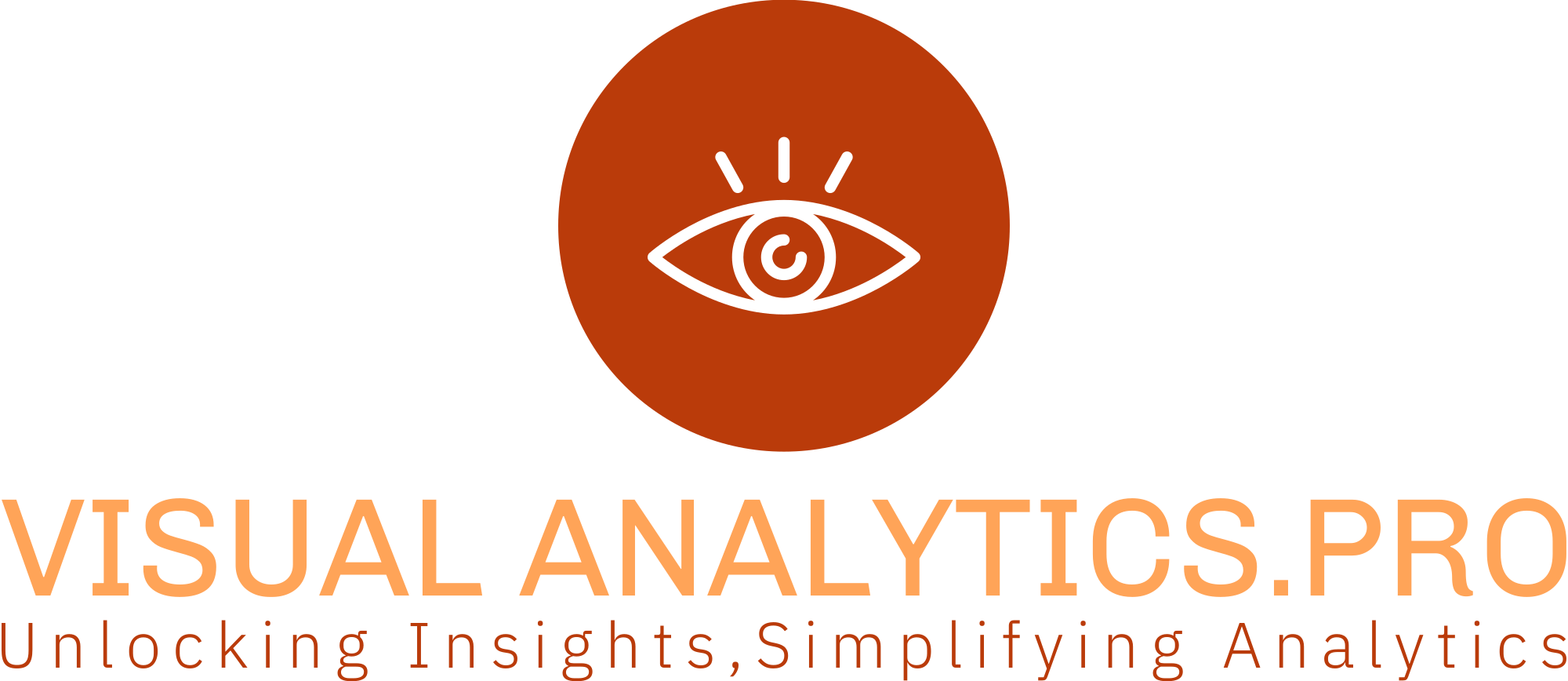Visual analytics is a multidisciplinary field that combines data analysis with interactive visualization tools. It empowers individuals to explore, analyse, and comprehend data through graphical representations, making it easier to identify patterns, trends, and outliers. In essence, visual analytics is all about transforming raw data into visual insights that are easier to understand and act upon.
Visual analytics holds immense value because our brains are naturally wired to process visual information efficiently. When data is presented visually, we can quickly grasp complex relationships and draw conclusions. Here are some scenarios where visual analytics shines:
- Business Dashboards: Visual analytics helps businesses monitor key performance indicators (KPIs) through interactive dashboards. These dashboards can display sales trends, website traffic, or customer demographics, making it easier for decision-makers to spot opportunities and challenges.
- Healthcare: In healthcare, visual analytics aids in patient care and research. For instance, doctors can visualize patient data to track treatment progress, and researchers can use interactive charts to explore patterns in disease outbreaks.
- Environmental Monitoring: Climate scientists use visual analytics to understand climate data and make predictions. Maps and graphs can show temperature trends, carbon emissions, and more.
- Financial Analysis: Analysts and traders use visual analytics to track stock market data, displaying real-time price movements and historical performance. Candlestick charts, for example, provide a visual representation of price fluctuations.
Let’s explore a couple of simple examples to illustrate how visual analytics works:
Sales Data
Imagine you’re a store manager tracking monthly sales. You have a spreadsheet with sales figures for the past year. To gain insights, you create a bar chart that visualizes monthly sales. The chart reveals a clear pattern of higher sales during the holiday season, enabling you to plan inventory and marketing accordingly.
Weather Data
Suppose you’re curious about the weather in your city over the past year. You collect temperature and rainfall data and create a line graph. By looking at the graph, you can easily identify when the hottest and wettest months occurred. This insight might lead you to prepare for extreme weather conditions or plan outdoor activities during favorable periods.
To start your visual analytics journey, consider using user-friendly tools like Microsoft Excel, Google Sheets, or Tableau Public, which offer various visualization options. Begin with small, familiar datasets and experiment with different chart types (bar charts, line graphs, pie charts, etc.) to see which works best for your data.
Here is the link to download Tableau Public: https://www.tableau.com/products/public


















